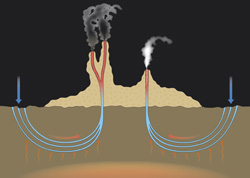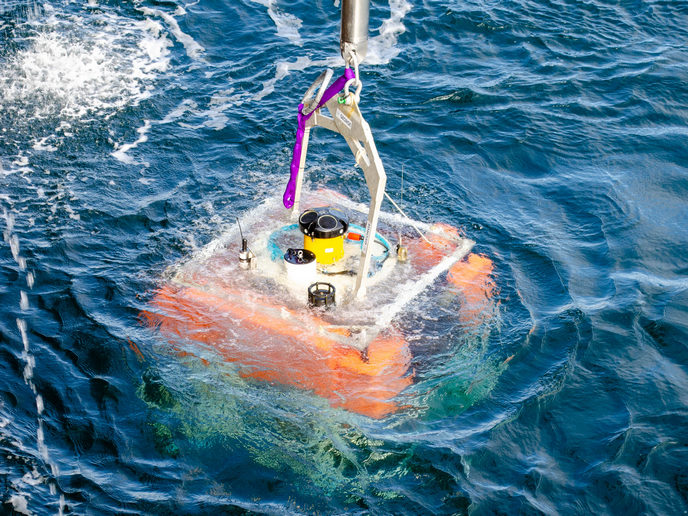Getting to the bottom of things
The typically cold and dark environment of the deep sea floor in fact holds many mysteries and adaptations for survival. The ‘Extreme ecosystems studies in the deep ocean: technological developments’ (EXOCET/D) project was undertaken to develop instrumentation enabling the exploration, description and quantification of biodiversity in deep sea habitats with a particular emphasis on the links between community structure and environmental dynamics. The targeted ecosystems shared a variety of characteristics. They were associated with hydrothermal vents and cold seeps (so-called emissions of reduced fluids). Hydrothermal vents are created by water seeping into the Earth’s crust, dissolving minerals and metals along the way and then becoming super-heated from nearby magma, eventually erupting like geysers through the ocean floor and into the water above. Cold seeps are chemicals leaking from the Earth’s crust into the ocean at the same temperature as the surrounding water. In addition, the ecosystems had peculiar topographies (seamounts and deep corals) and massive organic inputs, unusual for the deep sea which is in general a food-limited environment. They also demonstrated steep physical and chemical gradients, for example as associated with the hydrogen sulphide thermal vents. Furthermore, they had unusual biological productivity and high perturbation levels, with strong interactions between organisms and their habitats. The small sizes of these organisms and their communities combined with their depth make it difficult to study them with surface vessels. The Exocet/D project developed 13 prototype instruments to sample, measure and image deep sea fragmented habitats. Instrument validation was demonstrated during a scientific sea cruise to study hydrothermal communities on the mid-Atlantic ridge. The researchers studied the links between community structure and environmental dynamics, transmitting data and images in real-time. In addition, the researchers produced a movie of the expedition to be presented at aquariums and conferences. In summary, the Exocet/D project contributed valuable new instrumentation for exploring the harsh and extreme environments of deep sea ecosystems from a sea vessel and collected important data on some of these systems in a test run. The project outcomes should be of value to researchers, educators and policymakers alike, with concerted effort producing tangible results toward understanding – and saving – these deep sea habitats.







